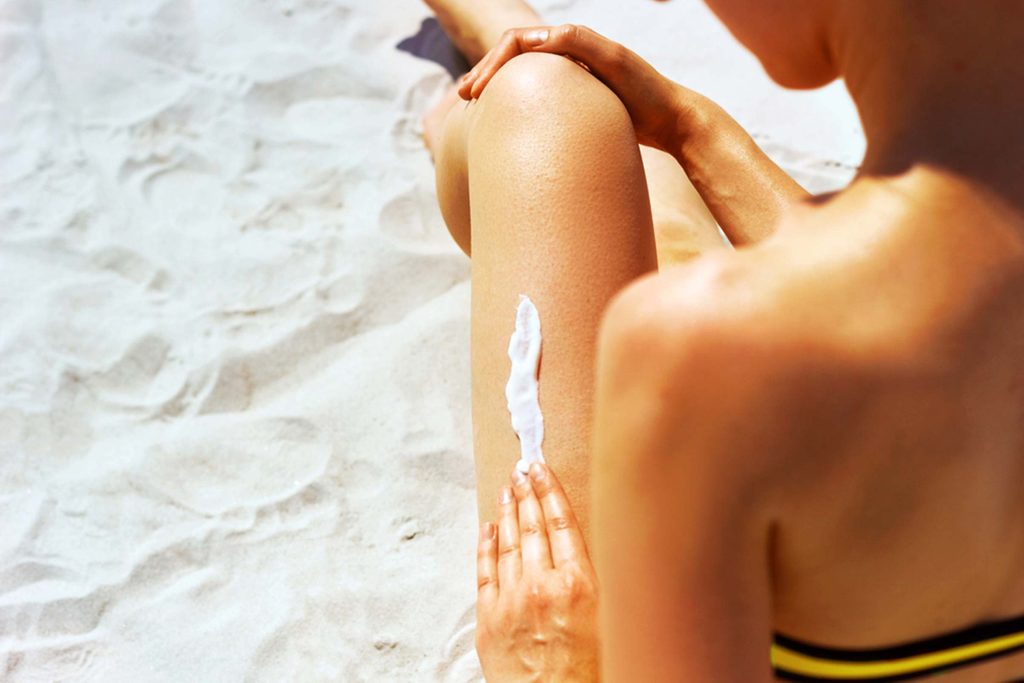Warning! Three out of Four Sunscreens Apparently Don’t Work—Here’s Why
Updated: May 12, 2021
Turns out your SPF of choice may be leaving you dangerously exposed. Find out which sunscreens work as advertised—and are safe to use.
 When it comes to sunscreen, you believe what it says on the tube, right? Unfortunately, many products that advertise sun protection don’t live up to expectations—which is why it helps to know what products dermatologists actually use. Each year scientists with the consumer safety group, Environmental Working Group (EWG), analyze the biggest sunscreen brands on the market and determine the best and worst products. Their 2017 report is out, and it claims that a stunning 73 percent of the products tested didn’t work as well as advertised and/or contain “worrisome” ingredients.
When it comes to sunscreen, you believe what it says on the tube, right? Unfortunately, many products that advertise sun protection don’t live up to expectations—which is why it helps to know what products dermatologists actually use. Each year scientists with the consumer safety group, Environmental Working Group (EWG), analyze the biggest sunscreen brands on the market and determine the best and worst products. Their 2017 report is out, and it claims that a stunning 73 percent of the products tested didn’t work as well as advertised and/or contain “worrisome” ingredients.
For the tests, the EWG looked at SPF (sun protection factor), chemical ingredients, and overall safety and effectiveness in 880 beach and sport sunscreens, 480 moisturizers and 120 lip products. They also looked at the child-focused category—products with “baby,” “kids,” “little,” “children” and “pediatric” in the name. The experts checked how well individual ingredients filtered UVA and UVB rays—pointing out that a good sunscreen should block both of types. One important finding is that products claiming a 50-plus SPF encourage an exaggerated sense of protection in consumers.”Sunscreens are really mis-marketed, and as a result, people who depend on them think they are far more powerful than they really are,” Sonya Lunder, a senior analyst with the environmental advocacy group and lead scientist on the report, told CNN.
When it comes to those “worrisome” ingredients, the group is particularly concerned about sunscreens containing oxybenzone and retinyl palmitate. EWG points out that oxybenzone is a hormone disruptor, which can cause allergic reactions. Some studies suggest oxybenzone behaves like estrogen in the body, lowering testosterone in men and raising the risk of endometriosis in women. As for retinyl palmitate, the EWG website reports that “government test data shows more skin tumors and lesions on animals treated with [retinyl palmitate] and exposed to sunlight.” However, the report indicates that since 2010 use of this “troubling ingredient” in sun protection products has dropped by more than half, and it was in only 14 percent of the products they tested for 2017.
If you take sun protection seriously—and we all should—check out the full report and note the EWG sunscreen top recommendations, such as All Good Sport Sunscreen (SPF 30), Sunology Natural Sunscreen (SPF 50) and Tropical Sands Face Stick Sunscreen (SPF 30).
Before you go, find out 10 ways dermatologists switch up their summer skin-care routine.